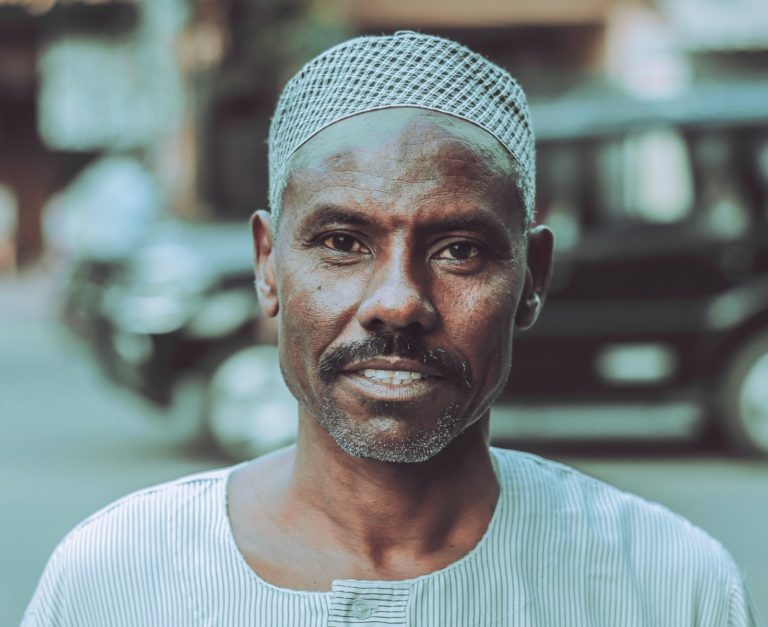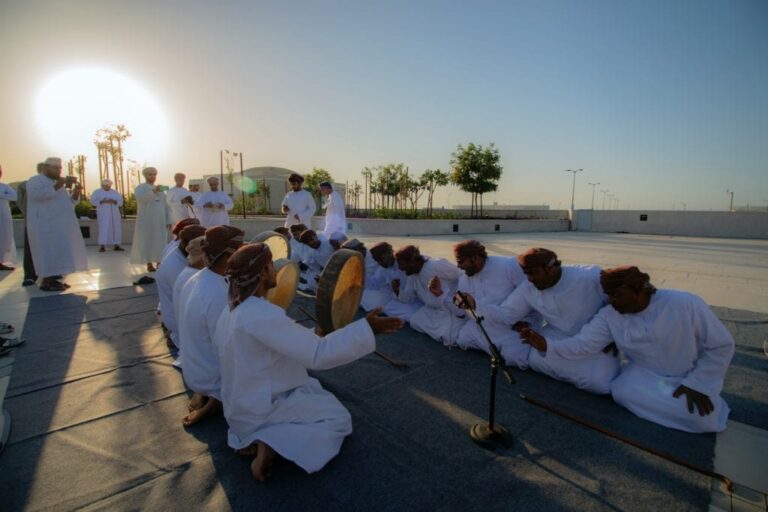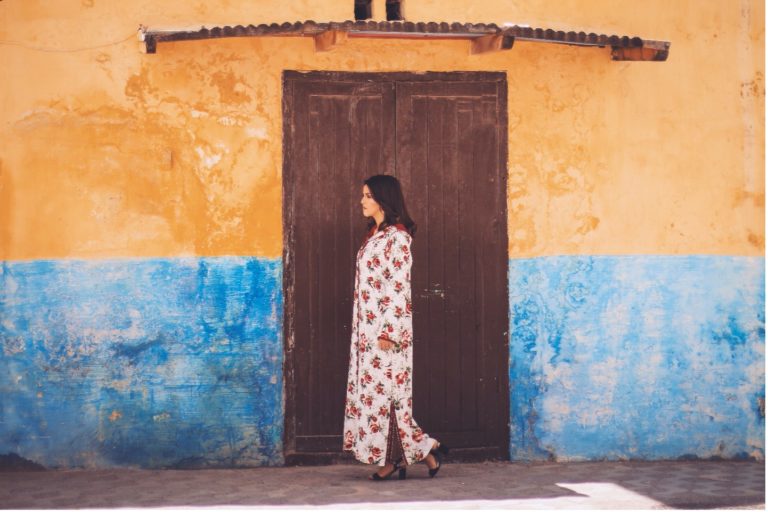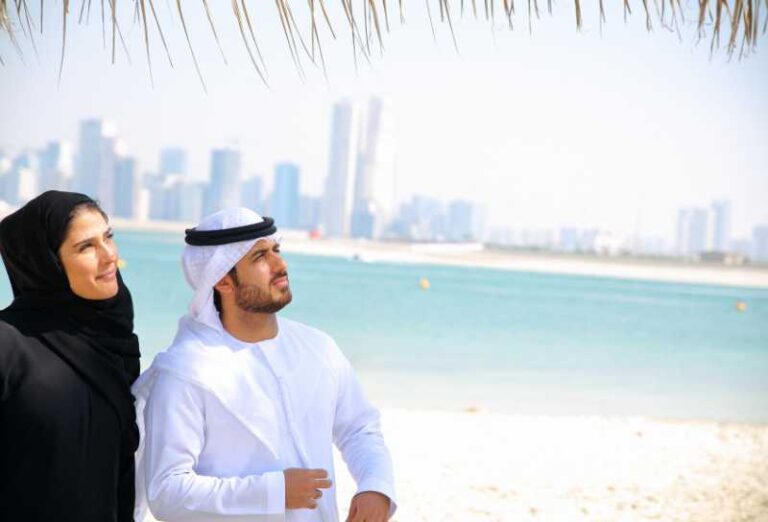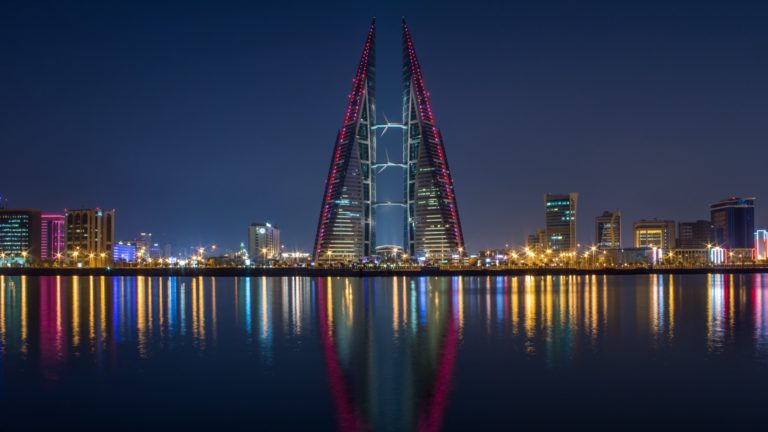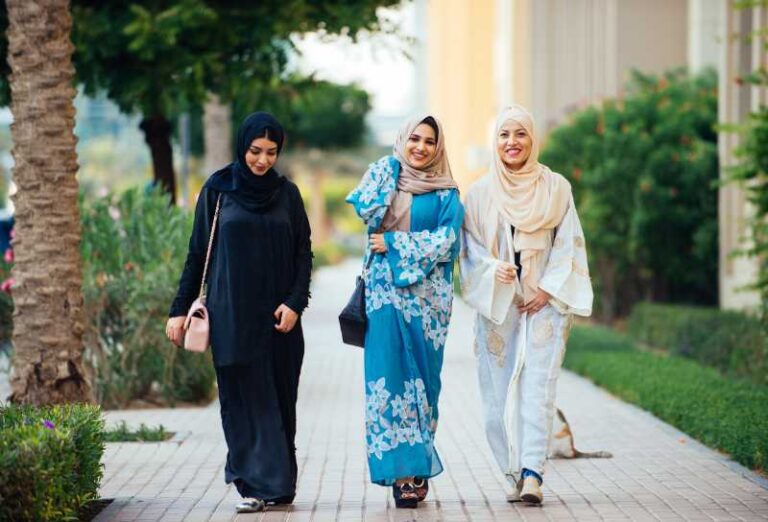Jordan: traditional clothing
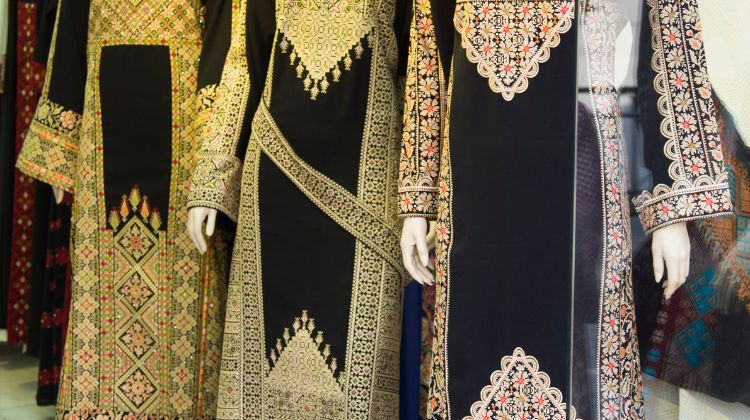
In Modern Jordan, men and women wear more Western-influenced styles of clothing that are readily available in local stores or big retail shops, and for more conservative women, modern Islamic dress.
With that said, traditional clothing is still prominent, especially during national events, special occasions, or religious holidays.
Among Jordanian women, embroidery makes up a major part of the national identity and is a highly-valued skill passed on to daughters as a distinctive way of preserving customs and traditions.
While the traditional dress has adopted some more European and contemporary structures, there are many instances where high fashion draws from the large and loose forms of authentic Jordanian garments.
In this article, we explore the traditional clothing of Jordan and how it evolved over the centuries.
Table of Contents
Embroidery
Embroidery is such an important aspect of Jordanian traditional crafts that women take big pride in.
While intricate embroidery has seen a huge revival in recent years, especially in the high fashion scene, this exquisite art has always been a major part of authentic Jordan identity.
From elegant gowns to elaborate jackets, the traditional needlework combined with the rich middle Eastern textiles and fabrics has become the focal point of many designer collections frequently featured in the catwalks of Jordanian hotels.
This beautiful tradition began in small remote villages where young girls would take up embroidery both as an art and as a tool to distinguish themselves and express their creative side.
In addition to that, Jordanian girls often displayed their cunning skills and top-notch needlework as a way to attract a suitable bridegroom match.
Each bride-to-be, regardless of her background or social class, would take tremendous care in crafting and embroidering her own trousseau.
This usually consisted of a dozen or half a dozen loosely cut robes that make up almost the entirety of her wardrobe.
These dresses took so much time, effort, and resources to make that they were designed to last Jordanian girls for a lifetime.
This meticulously detailed art of embroidery has also carried over into stitching of charmingly refined cushions, drapes, divans, quilts, and ottomans that delightfully adorn Jordan homes.
The vivid colors and striking patterns are so alluring they can transform even the blandest of interiors into this enchanting time capsule reminiscent of a magical and enthralling one thousand and one nights’ setting.
From vibrant shades of red, maroon, violet, and pink, to vigorous zesty shades of green, gold, and burnt orange.
Jordanian embroidery relies on natural landscapes and references to flora and fauna in creating intricate patterns and motifs using simple cross-stitch methods.
These themes are usually recurrent and consist of flowers, trees, waves, and feathers, in addition to the occasional geometric patterns that include zigzags and triangles.
Women’s Traditional Clothing in Jordan
Jordanian women liked to wear long gowns and flowy dresses with intricate embroidery and elaborate details.
Though unlike most women in that region (notably those of Palestine), their traditional clothing wasn’t very influenced by Turkish or Western fashion, until very late in the 1940s.
Jordan’s men and women led a very rural lifestyle compared to their Middle Eastern peers. So their clothing, in that regard, managed to preserve its deeply rooted traditional flair.
In terms of women’s clothing, the Jordanian dress code can be split into two main categories: that of the settled village women, and that of the Bedouin.
Until the early 20th century, the Bedouin women’s main garments included the extra-large dress called thob ‘ob. This is an incredibly massive robe that is somewhere around a whopping 3 meters in length (9 feet), with equally large sleeves.
The way Jordanian Bedouin women would typically wear this dress is by wrapping it over a belt until the extra fabric falls back to the ground.
This, in turn, provides the women with a lot of fabric to work with or use for storage.
The sleeves were so lengthy that women would wrap them around their heads and tie them into place as a cloth headband. While the other sleeve would be used to keep the woman’s infant next to her while she is working.
Despite the original gargantuan structure of this dress going out of fashion somewhere during the first decades of the 20th century, Bedouin women still make it a statement to have a dress with long sleeves that they’re able to tie behind their backs.
The oversized robe form transcends the Bedouin landscape far into the Ma’an region in Souther Jordan and can be seen on women during special occasions and holidays.
This dress is usually made from bright red or vivid green silk that is typically cut into large strips then assembled, a style that is very reminiscent of the Bethlehem ikhdari dress.
In the north, Jordan women wear black dresses made from cotton and embroidered with colorful triangles and geometric patterns.
Another traditional costume that’s equally popular in the north is called Shirsh, which is a long but more fitted robe with tight sleeves and featuring an adorned neckline and embroidered along the sides.
Men’s Traditional Clothing in Jordan
Men of Jordan, both settled villagers, and Bedouin wore, more or less, the same items of clothing.
The main traditional piece being the thawb or dishdasha, which is a plain cotton cloth, sometimes white, and sometimes in other muted colors.
This is a rather minimalistic garment compared to modern-day more elaborate costumes.
As of recently, Jordanian men can be seen sporting a three-piece suit that consists of the dishdasha, a vest, and an overcoat.
The suit is usually made from a blend of British wool and cotton with headwear called kuffiyah, which is a long scarf that’s typically white and red checkered and fastened by a black band, called ‘aqal and traditionally made of woven goat hair, that goes around the crown of the head.
The ‘aqal can be used to distinguish the marital status of men in Jordan. For instance, when the band is worn more low to one side than the other, it means the person is unmarried.
On the other hand, when the band is worn straight on the head, this indicates that the person is married.
Moreover, there is a more elaborate and luxurious version of this headpiece that is entirely Jordan in nature, it’s called shamagh.
This is made from premium cotton and silk coming from Syria, and sometimes features several tassels around the sides and edges.
Though the kuffiyah can be found in black and white checkered patterns or even plain white, the red detailed headdress is the most popular form and can be found in other Arab countries as well.
In the past, men in Jordan, similar to Palestinians, wore a long coat as an outer layer called a Qunbaz and made from Damascian silk.
The Jordanian dishdasha is characterized by distinctive slits up the sides, which are more function-based than for pure aesthetics since they allow for better movement and walking.
During the winter months, men will often wear dishdashas made from heavier cloth, wool for instance, and usually in darker color schemes.
The coats worn over the dishdasha and vest can be either green, red, blue, or brown, and decorated with dark strips of fabric adorned with geometric patterns.
While these garments are still manufactured in Damascus, they’re mostly decorative or purchased by tourists.
There’s also a larger, more opulent, version of this coat that is entirely lined with lamb’s fleece but mainly worn by wealthier villagers and Bedouin.

